
People and their dogs: when the animal mirrors its owner
In the art of the portrait, the dog is often there to say something about the subject. Here are ten portraits that symbolise the strong bond that grows up between a person and an animal.
First, a crucial piece of information: 26 August is National Dog Day all over the world. If our four-legged friends have been accorded this honour it is because the bond between humans and dogs has never been in doubt. It goes back to prehistoric times.
A dog is a symbol of friendship, loyalty and faithfulness, and often says something – albeit unintentionally – about its master or mistress and can become an extension of them, to the point where a kind of mimetism creeps in between the human and the animal. The resemblances can be blatant in portraits, where objects and accessories are used as part of the characterisation of the subject.
People and their dogs: check them out!
1] Self-portrait with a Black Dog – Gustave Courbet
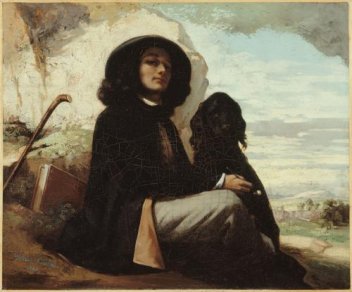
[© Petit Palais / Roger-Viollet]
1842-1844 - Petit Palais
Courbet presents himself in a landscape near Ornans with the black spaniel that he had been given two years before.
The delicate, still beardless face, framed by flowing, black hair, is that of a debonair, poised young man, ready to take Paris by storm.
2] Portrait of Miss Ella Carmichaël - Edmond Aman-Jean

1858 - Petit Palais
The wistful expression of the young Englishwoman and the tranquil presence of the family dog create an impression of gentle languor.
3] "Sara with her Dog" – Mary Cassatt
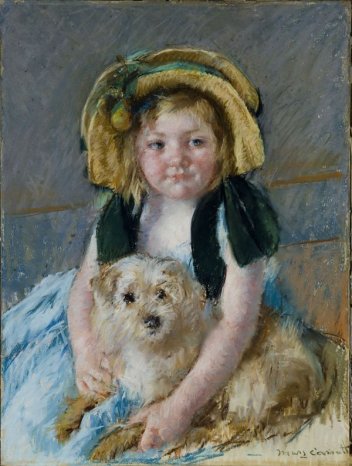
c. 1901 - Petit Palais
Mary Cassatt’s pastel strokes to represent the little girl’s hair and the dog’s coat add tremendous life to the picture.
4] Portrait of the Artist in Oriental Attire
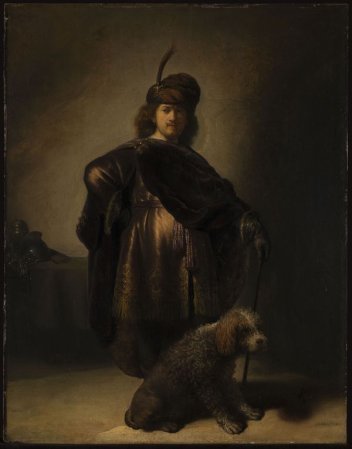
Rembrandt van Rijn - Petit Palais
To emphasise the aristocratic quality of the figure, Rembrandt decided on a hunting dog and no doubt had fun making the contrast between the submissive attitude of the animal and the haughty demeanour of his self-portrait as a turbaned prince.
Trivia Department: X-rays have revealed that Rembrandt added the dog later, apparently to cover up his legs which he felt weren’t well positioned.
5] "Portrait of a Young Girl" – German School
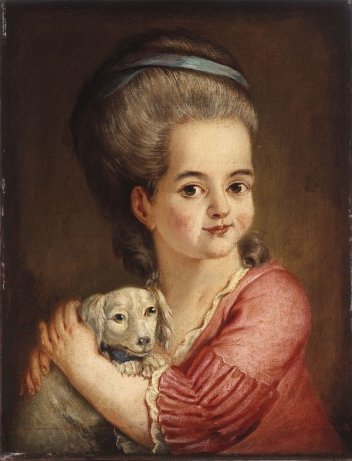
Second half of 18th century – Musée Cognacq-Jay
The arrangement of her hair, which is very sophisticated for a girl aged about ten, suggests that this portrait could be of Germanic origin.
The little dog she is holding in her arms echoes the guilelessness of the subject.
6] Portrait of Sarah Bernhardt - George Clairin

Petit Palais - 1876
This large portrait of a studiedly nonchalant Sarah Bernhardt in a satin dress was one of her favourites.
Painted in 1876, it is an early example of the Art Nouveau aesthetic with its flowing lines, iridescent tones and the magnetism of that seductive yet troubling female presence.
The dog at her feet adds to the power of her charisma and underlines her generally acknowledged role as a diva.
7] "Portrait of a little girl with a small dog" - JB Greuze

Musée Cognacq-Jay
The similarities between the girl and the red and white dog in her arms are striking.
8] Portrait of Miss Power, the future Mrs O’Shea" - John Rus
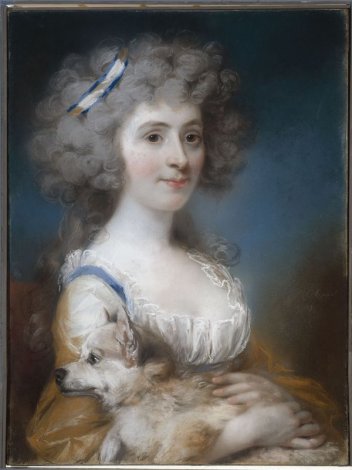
1789 - musée Cognacq-Jay
9] "Mme Emile Blanche, Mother of the Artist" – by JE Blanche

10] Portrait of a man in a velvet suit - Heindrick Pot
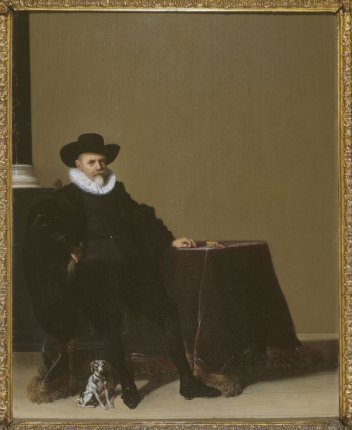
c.1585-1657 - Petit Palais.